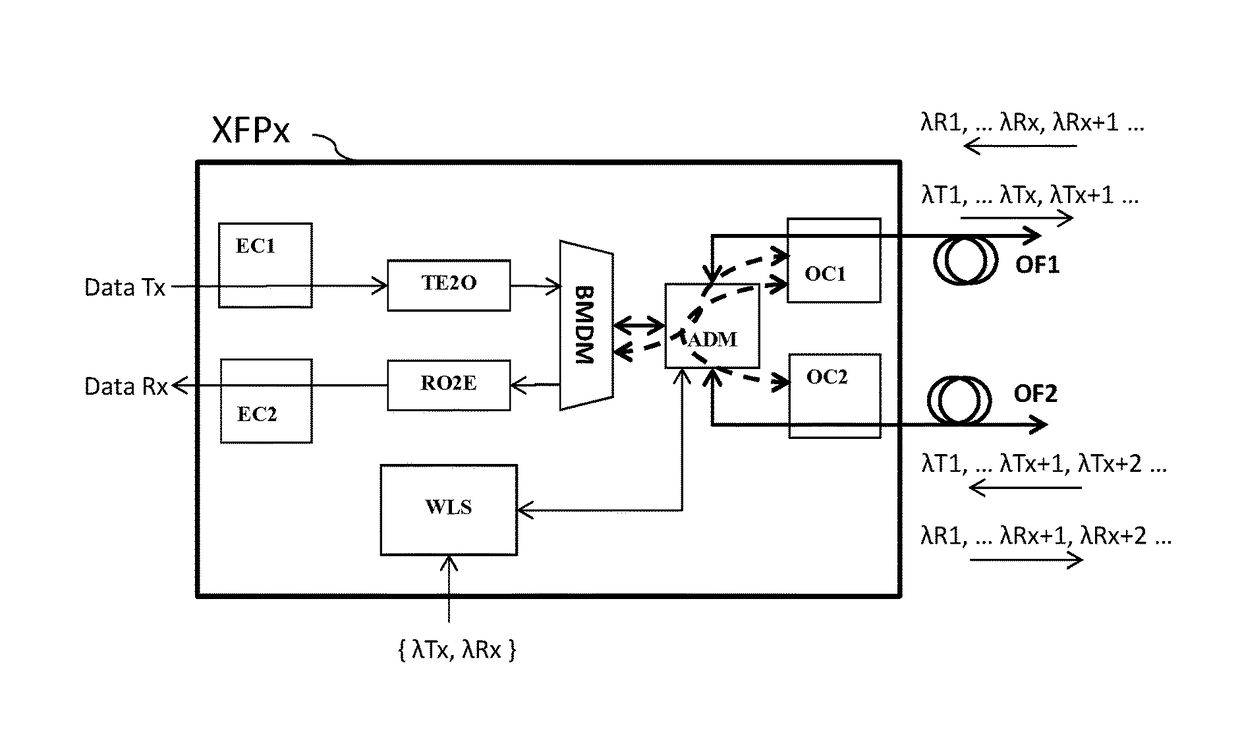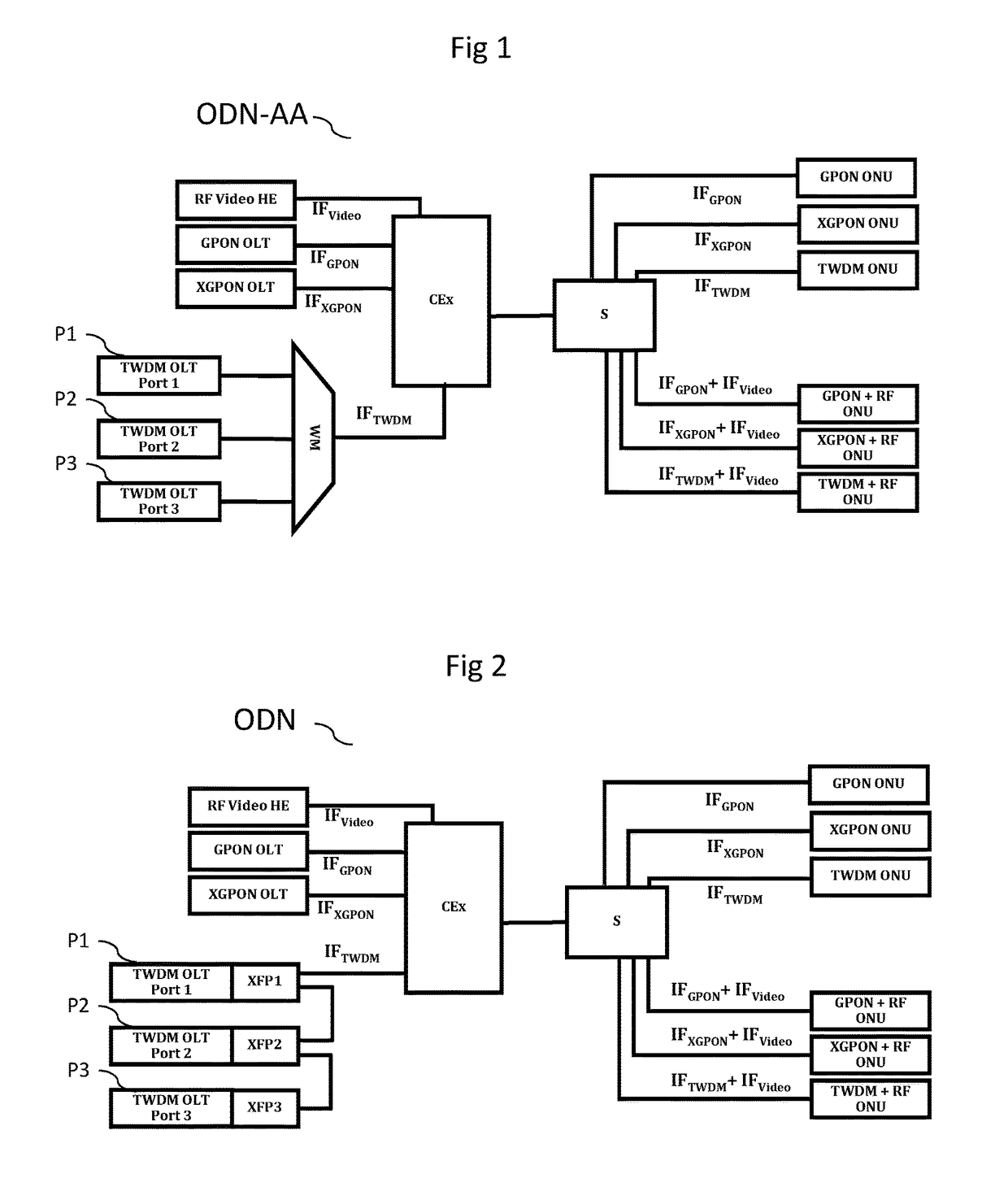Cascade-form wavelength division multiplexing optoelectronic transceiver device, system and method
a transceiver and cascade-form technology, applied in multiplex communication, instruments, optical elements, etc., can solve the problems of lack of upgradability, cost overhead, and drawbacks of wm, so as to eliminate wm wavelength multiplexing/demultiplexing boxes, cost overhead, and lack of upgradability
- Summary
- Abstract
- Description
- Claims
- Application Information
AI Technical Summary
Benefits of technology
Problems solved by technology
Method used
Image
Examples
Embodiment Construction
[0045]In the subsequent description, embodiments of the invention are presented in the case of mixed optical distribution infrastructures using WDM and / or TWDM techniques, in addition to TDM techniques. These infrastructures can comprise passive optical networks (PON) currently undergoing or shortly to undergo standardization at the ITU-T, such as the PON networks of NG-PON2 type, as well as other types of networks, in addition to or in place of PON networks, such as for example point-to-point optical networks.
[0046]FIG. 1 presents an ODN-AA mixed optical distribution infrastructure, according to the prior art.
[0047]For simplicity of illustration, this and the following figure show only a few TDM OLTs and only a few TWDM or WDM OLT ports, knowing that they may reach several tens or indeed several hundred in number in one and the same mixed optical distribution infrastructure. Likewise, only one ONU per OLT or per OLT port is illustrated, knowing that each OLT typically serves 64 or ...
PUM
 Login to view more
Login to view more Abstract
Description
Claims
Application Information
 Login to view more
Login to view more - R&D Engineer
- R&D Manager
- IP Professional
- Industry Leading Data Capabilities
- Powerful AI technology
- Patent DNA Extraction
Browse by: Latest US Patents, China's latest patents, Technical Efficacy Thesaurus, Application Domain, Technology Topic.
© 2024 PatSnap. All rights reserved.Legal|Privacy policy|Modern Slavery Act Transparency Statement|Sitemap



